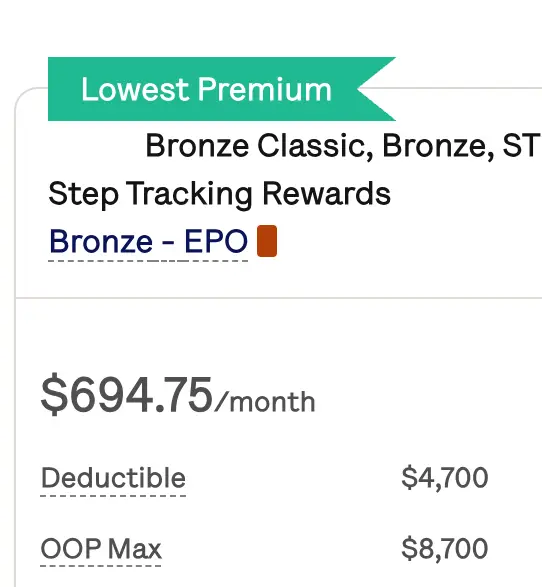15 Common Causes of Pain Below the Ribs - Treatments & Where To Go
Pain below the ribs can be caused by various conditions ranging from minor digestive issues to serious medical complications. Research from the Mayo Clinic shows that potential causes include gastroenteritis (25%), gastritis (20%), gallstones (15%), peptic ulcers (15%), and more severe conditions such as pulmonary embolism and kidney stones (25%). A healthy diet and over-the-counter medication can manage most minor cases, but frequent or severe pain should prompt immediate medical attention. Options for professional care include family physicians, urgent care clinics, or emergency departments. Prevalence of pain below the ribs vary between genders and age groups:
- Gender: In a study of adults in the United States, the prevalence of pain below the ribs was 15.3% in women and 9.8% in men.
- Age: In the same study, the prevalence of pain below the ribs increased with age, from 5.8% in people aged 18-29 to 22.3% in people aged 65-74.
6 Most COmmon Causes of Pain Below the Ribs
The Mayo Clinic identifies several possible causes for pain below the ribs. These include gastroenteritis, gastritis, gallstones, peptic ulcers, and more severe conditions like pulmonary embolism and kidney stones.
| Cause | Percent of Cases | Common Symptoms | Treatment |
|---|---|---|---|
| Gastroenteritis | 25% | Diarrhea, vomiting, stomach cramps. | Rest, hydration, medical treatment in severe cases. |
| Gastritis | 20% | Indigestion, nausea, feeling of fullness in the upper abdomen after eating. | Medication, lifestyle modifications. |
| Gallstones | 15% | Sharp, intense pain on the right side of the abdomen. | Surgical removal of the gallbladder if symptomatic. |
| Peptic Ulcers | 15% | Burning stomach pain, bloating, nausea. | Medication. |
| More Severe Conditions (e.g., Pulmonary Embolism, Kidney Stones) | 25% | Sudden, sharp chest pain (pulmonary embolism). Severe pain in the back or side below the ribs (kidney stones). | Immediate medical attention, often hospitalization. |
1. Gastroenteritis (25%)
Gastroenteritis accounts for approximately 25% of abdominal pain cases. This condition, an inflammation of the gastrointestinal tract, typically results in symptoms such as diarrhea, vomiting, and stomach cramps. According to the Centers for Disease Control and Prevention, gastroenteritis affects an estimated 179 million individuals in the U.S. each year. Viruses, such as norovirus and rotavirus, are the leading causes, but bacterial infections also contribute to a significant number of cases. Rest and hydration are the primary at-home management strategies, but severe cases may require medical treatment to prevent dehydration.
2. Gastritis (20%)
Gastritis is responsible for approximately 20% of abdominal pain cases, according to the American College of Gastroenterolog. This condition involves inflammation of the stomach lining and is often linked to long-term use of NSAIDs, excessive alcohol consumption, or infection with H. pylori bacteria. Symptoms include indigestion, nausea, and a feeling of fullness in the upper abdomen after eating. Gastritis can typically be managed with medication and lifestyle modifications, but untreated cases can lead to complications like stomach ulcers and an increased risk of stomach cancer.
3. Gallstones (15%)
The American Gastroenterological Association estimates that gallstones are the cause of about 15% of cases of pain below the ribs. Gallstones are hardened deposits, usually composed of cholesterol, that form in the gallbladder and can cause sharp, intense pain on the right side of the abdomen. Risk factors include obesity, a diet high in fat and cholesterol, and a family history of the condition. In many cases, gallstones do not cause symptoms and do not require treatment, but when they do cause symptoms, treatment typically involves surgical removal of the gallbladder.
4. Peptic Ulcers (15%)
Peptic ulcers, which cause about 15% of cases of abdominal pain, are sores that develop on the lining of the stomach or upper part of the small intestine. The National Institute of Diabetes and Digestive and Kidney Diseases reports that most peptic ulcers are caused by an H. pylori infection or long-term use of NSAIDs. Common symptoms include burning stomach pain, bloating, and nausea. Medication can often effectively manage peptic ulcers.

Get affordable doctor copay without paying insurance premiums
Join 39,000 people and get Mira, the best alternative to traditional insurance. Enroll and use immediately. Plans start at only $45/mo.
Khang T. Vuong received his Master of Healthcare Administration from the Milken Institute School of Public Health at the George Washington University. He was named Forbes Healthcare 2021 30 under 30. Vuong spoke at Stanford Medicine X, HIMSS conference, and served as a Fellow at the Bon Secours Health System.

